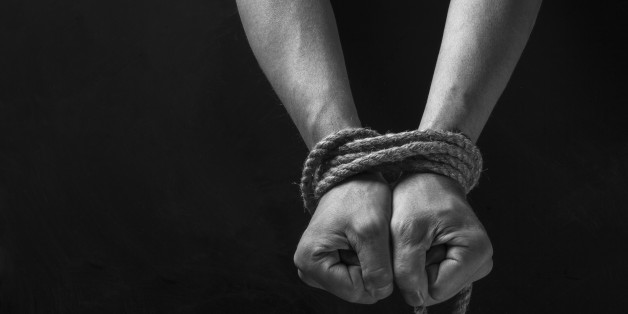70% of human trafficking victims are women and girls


Women and girls represent 71% of all human trafficking victims, according to the Global Report on Trafficking in Persons 2016, released by United Nations Office on Drugs and Crime. Additionally, almost one third of the victims (28%) are children. They used data from over a hundred countries and analyzes the situation of more than 63,000 victims between the 2012-2014 period.
“Trafficking for sexual exploitation and for forced labour remain the most prominently detected forms, but victims are also being trafficked to be used as beggars, for forced or sham marriages, benefit fraud, or production of pornography,” said UNODC Executive Director Yury Fedotov during the report presentation on December.
According to the report over the last 10 years the profile of detected victims has changed. Although women represent most of the victims now men make up larger shares of the total number of victims (21%).
Women and girls tend to be trafficked for marriages and sexual slavery, while men and boys are typically exploited for forced labour in the mining sector, as soldiers, porters and slaves. More so in regions like Sub-Saharan Africa and Central America and the Caribbean children are 62% and 64% of the victims respectively. Also, the share of detected domestic trafficking has also increased, with 42% of detected victims between 2012-2014 were trafficked within their country’s border.
Among other findings, UNODC found victims and traffickers often have the same background as these commonalities help the perpetrator gain their victim’s trust and carry out the crime. Also, being of the same gender can also enhance trust.
“Data from court cases indicate that women are commonly involved in the trafficking of women and girls, in particular. Most of the detected victims of trafficking in persons are females; either women or underage girls.” While traffickers are predominately male (63%), women comprise a large share of convicted offenders (37%). According to the report this share is even higher among traffickers convicted in the victim’s home country.
More so, conflict can help drive human trafficking as people escaping from war and persecution are particularly vulnerable.
For example, the number of Syrian victims rapidly increased following the start of the conflict in 2011. Traffickers leverage their desperation to deceive them IGNORE INTO exploitation.
Additionally, the presence of large number of troops creates demand for labor and sexual services. This is the case of Nadia Murad, UNODC Goodwill Ambassador for the Dignity of Survivors of Human Trafficking, who was enslaved by the so called Islamic State along with thousands of Yazidi women.
“The 2016 report reinforces the need for all countries to stand and act together against human trafficking in the spirit of shared responsibility.” As of today 88% of the countries have criminalized human trafficking, in line with the United Nations Protocol. This is a huge improvement as in 2003 only 18% of the countries had such laws.
Nevertheless, UNODC highlights the number of convictions remains far too low and victims don’t always receive the protection and services that countries should provide.
“More resources clearly need to be devoted to identify and assist victims, as well as improve criminal justice responses to detect, investigate and successfully prosecute cases. Such responses must be more strategic, targeting upstream organized criminal networks through intelligence sharing, joint operations, financial investigations and coordination within and across borders,” added Mr. Fedotov.
Meanwhile, “UNODC will continue to provide practical support to help countries make good on their promises to confront the criminals, protect trafficking victims and, we hope, prevent more women, men and children from being victimized,” he concluded.
The report is produced every two years and reinforces the link between tackling crime and achieving the 2030 Agenda’s Sustainable Development Goals.
LatinAmerican Post





